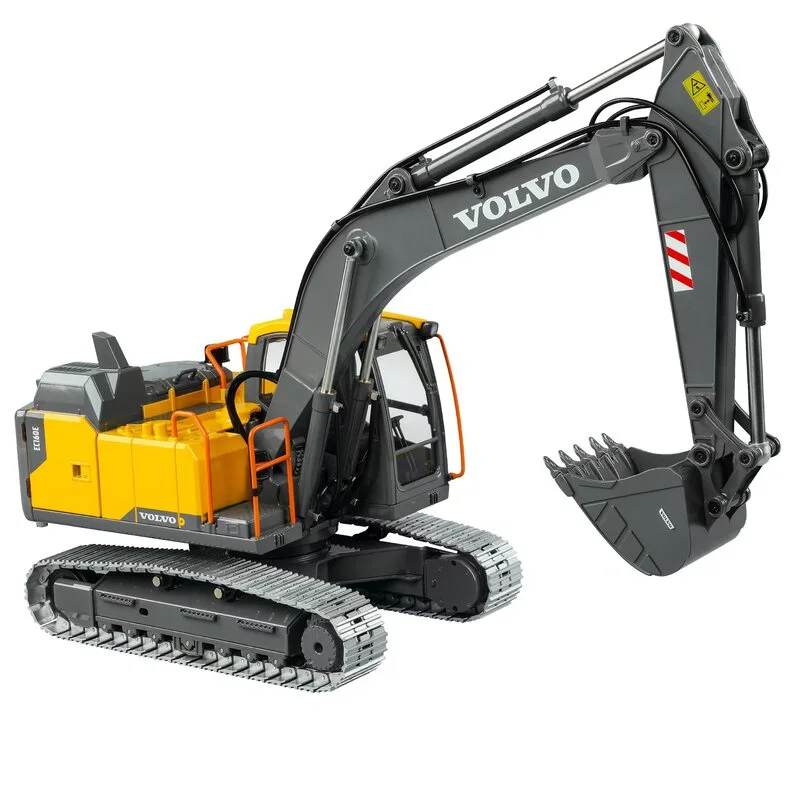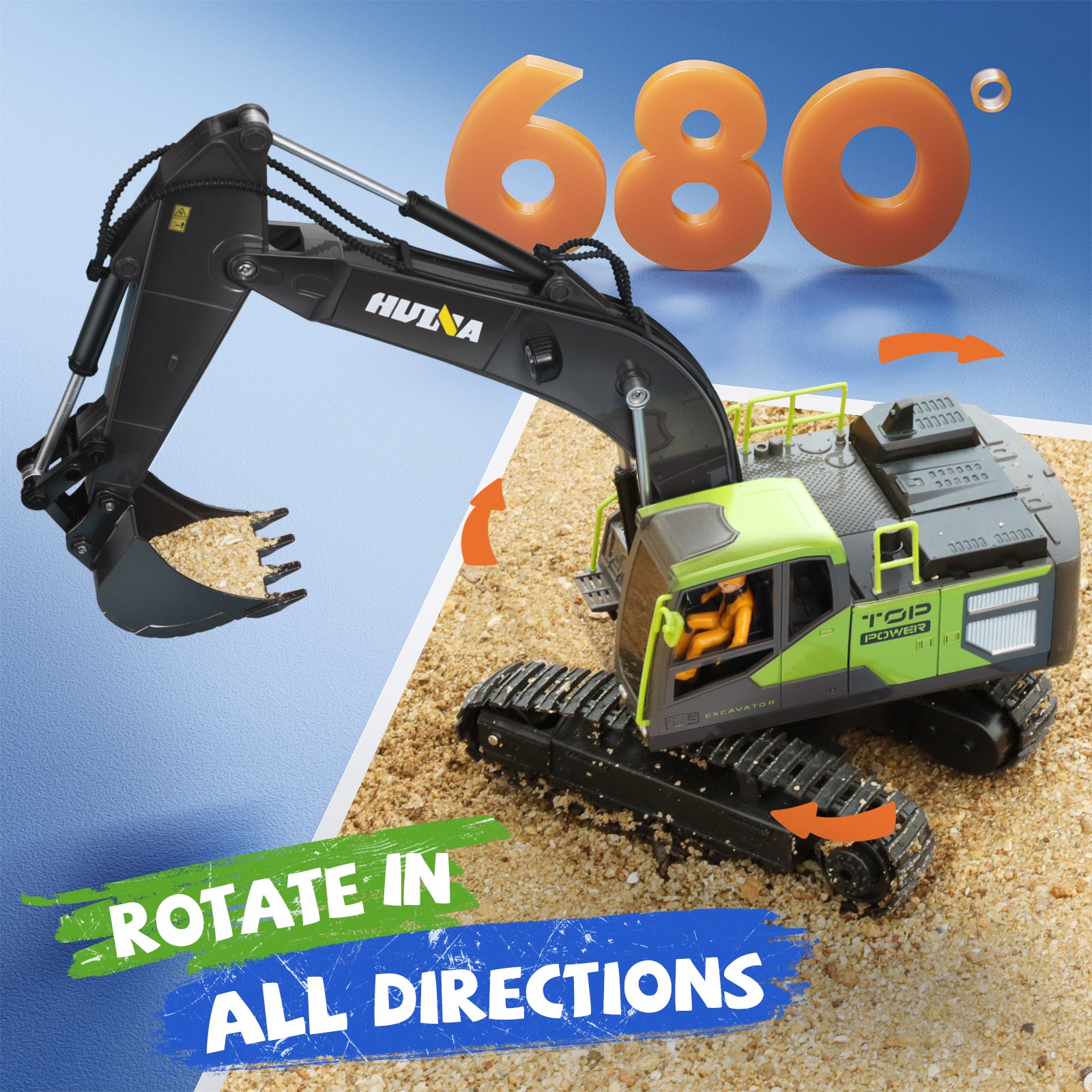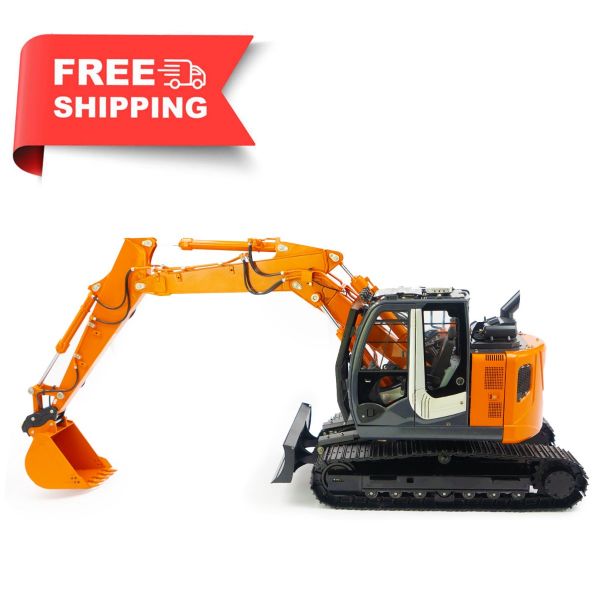The Necessary Features of Excavator That Make Things a Must-Have Tool
Excavators are crucial in the building and construction and landscaping sectors. Their functional accessories enable a series of jobs, from digging to demolition. In addition, they boast exceptional excavating depth and reach, powered by durable engines. Driver convenience and compact designs enhance use in numerous settings. What absolutely sets excavators apart are their advanced hydraulic systems and resilience. Comprehending these attributes can make clear why they are taken into consideration crucial tools on any type of work site.
Functional Attachments for Improved Performance
Excavators are effective devices on their very own, the enhancement of functional attachments considerably improves their functionality. These add-ons change a common excavator right into a multi-purpose tool, appropriate for a variety of jobs. Buckets, for example, can be found in different forms and dimensions, allowing operators to dig, scoop, and relocate products effectively. Hydraulic thumbs can be added for enhanced gripping and handling of cumbersome items, such as logs or rocks.Furthermore, specialized accessories like augers and breakers permit exploration and demolition work, expanding the excavator's utility on building and construction websites. remote control excavator. Grapples are another choice, suitable for moving and arranging particles. This flexibility not only enhances performance however likewise decreases the demand for numerous makers, conserving time and prices. By equipping excavators with the best attachments, operators can tackle diverse projects, making them essential in the building market
Superior Digging Depth and Reach
Excavators are developed with remarkable digging depth and reach, permitting them to navigate in limited areas and accessibility hard-to-reach areas. This capability is crucial for numerous construction and excavation projects, where typical machinery might drop brief. With adjustable boom arms and extendable tracks, excavators can easily browse irregular surface while maintaining stability.The digging deepness can vary considerably amongst designs, typically varying from 10 to 25 feet, relying on the design and objective. This function makes it possible for operators to excavate structures, trenches, and various other deep structures efficiently. Furthermore, the reach of an excavator enables for accurate excavating and material handling without rearranging the equipment frequently, conserving time and labor costs.Ultimately, the exceptional digging depth and reach of excavators make them important for experts seeking to finish intricate jobs with accuracy and performance. Their adaptability enhances productivity on work websites, showcasing them as a crucial device in contemporary building.
Powerful Engine Performance

Effective engine efficiency plays a pivotal function in the capacities of an excavator when it comes to performance and efficiency on building and construction sites. A durable engine produces considerable horse power, enabling the equipment to deal with sturdy jobs with simplicity - remote control excavator. This strength converts into faster cycle times, allowing drivers to full projects more quickly.Additionally, powerful engines offer the required torque to handle difficult surfaces and differed loads, guaranteeing that the excavator can perform effectively under various conditions. Whether it is lifting, digging, or relocating products, the engine's performance straight influences the overall functional efficiency of the machine.Furthermore, advancements in engine technology have resulted in enhanced gas effectiveness, lowering functional costs while maintaining power output. Ultimately, the engine's performance functions as the foundation of an excavator, affirming its standing as an important device in the building sector
Advanced Hydraulic Equipments

Boosted Lifting Ability
A considerable improvement in raising ability can be credited to innovative hydraulic systems found in modern excavators. These systems utilize high-pressure fluid to produce greater force, allowing operators to raise heavier tons effortlessly. The design behind these hydraulics warranties peak performance, supplying a remarkable power-to-weight proportion that boosts general efficiency. Consequently, excavators can take on requiring tasks, such as lifting large materials or devices, without jeopardizing stability. Furthermore, the robust design of hydraulic elements contributes to raised toughness and integrity, making them appropriate for different building atmospheres. This enhanced training capacity not only reduces the time required for tasks however also lessens the requirement for extra equipment, showing vital for both productivity and cost-effectiveness in the building sector.
Enhanced Accuracy Control
Conventional excavators usually struggled with precision, contemporary hydraulic systems have actually transformed control systems, making it possible for drivers to perform tasks with amazing accuracy. These advanced systems make use of symmetrical control shutoffs that permit smoother and extra receptive activities, substantially decreasing the margin for mistake. Operators can currently carefully tune the excavator's movements, making it simpler to browse tight areas and manage delicate materials. Boosted responses systems better inform operators of real-time performance, making certain suitable coordination in between the equipment and operator. This increased accuracy not only boosts effectiveness however additionally enhances safety on work sites, lessening the threat of crashes. Consequently, modern-day excavators geared up with sophisticated hydraulic systems are invaluable devices for construction and excavation jobs needing precise precision.
Operator Convenience and Exposure
Operator comfort and exposure are essential other components in the layout of contemporary excavators (remote control excavator). Functions such as ergonomic seat design, enhanced exposure options, and reliable control designs substantially boost the operator's experience and efficiency. Focusing on these facets warranties that operators can work successfully and securely in various conditions
Ergonomic Seat Design
Convenience and visibility are critical in excavator style, with the ergonomic seat playing a crucial duty in improving the driver's experience. An ergonomic seat is crafted to sustain the driver's body, decreasing fatigue during long hours of procedure. Flexible attributes, such as seat height, back-rest angle, and lumbar support, satisfy private preferences and promote ideal stance. These adjustments enhance comfort and enable the driver to maintain concentrate on jobs without discomfort. Additionally, a properly designed seat can provide better lateral support, permitting smoother handling when the excavator is in operation. This thoughtful design not only increases productivity but also adds to overall safety, making sure that drivers can do their responsibilities efficiently and successfully.
Improved Visibility Attributes
The design of an excavator prolongs past just the seat, with improved visibility functions playing a significant function in driver comfort and total safety and security. Big windows and tactically located mirrors provide drivers with a clear view of their environments, lessening dead spots. This layout consideration enables much better spatial understanding, which is essential in hectic work atmospheres. On top of that, lots of excavators incorporate rearview electronic cameras and advanced tracking systems that aid drivers in steering tight rooms. The integration of these exposure includes not only promotes safety and security however likewise decreases driver exhaustion by allowing simpler tracking of job locations. Eventually, improved visibility adds to extra efficient procedures and helps assure that excavators can perform their jobs efficiently and safely.
Control Design Performance
While handling complex work websites, a reliable control format significantly boosts both operator comfort and presence. A properly designed control setup guarantees that drivers can access crucial features with very little effort, lowering fatigue during long hours. Ergonomic joystick placements and user-friendly switch arrangements permit for seamless operation, making it possible for operators to maintain focus on the task handy. In addition, my company clear exposure of both the workplace and the control panel is critical for safety and security and accuracy. Modern excavators commonly include flexible seats and control settings to fit various driver choices, further improving comfort. Eventually, a thoughtfully designed control format not only improves efficiency yet also fosters a much safer working environment by allowing drivers to respond swiftly to altering conditions.
Compact Style for Urban Environments
As metropolitan construction sites commonly face room constraints, a compact style becomes necessary for excavators operating in these environments. These machines are crafted to navigate tight spaces, permitting efficient maneuverability in crowded task websites. A reduced impact enables them to work closely to existing structures, decreasing interruption and optimizing productivity.The compact design frequently includes shorter tracks and a tighter turning distance, promoting procedure in slim streets and restricted areas. Light-weight products contribute to alleviate of transport, making it easier to move the excavator from one place to one more within the metropolitan landscape.Additionally, lots of small excavators are geared up with features such as functional add-ons and extendable arms, improving their capability while maintaining a little size. This flexibility enables drivers to take on a range of jobs, from excavating to demolition, all while suitable perfectly into the restraints of city settings.

Sturdiness and Upkeep Considerations
Resilience stands as a necessary consider the performance and long life of excavators, particularly sought after city environments. These machines are subjected to strenuous conditions, consisting of differing soil types, severe temperature levels, and high-frequency usage. Premium products and robust construction are necessary for making certain that excavators can endure these challenges without endangering functionality.Regular upkeep is equally essential in preserving toughness. Scheduled examinations, timely oil changes, and the substitute of worn parts contribute significantly to an excavator's life expectancy. Operators should likewise focus on hydraulic systems, tracks, and undercarriages, as these parts commonly bear the force of wear and tear.Investing in durable excavators with considerable upkeep plans enhances dependability and decreases downtime, ultimately causing increased productivity on construction sites. Consequently, comprehending the interplay in between resilience and maintenance is crucial for any individual taking into consideration the purchase of an excavator for city jobs.
Frequently Asked Concerns
How Do Excavators Compare to Other Construction Devices?
Excavators attract attention amongst building devices as a result of their adaptability, allowing jobs such as digging, lifting, and grading. Compared to others, their hydraulic capacities supply higher effectiveness and power, making them vital on numerous task sites.
What Security Includes Are Included in Modern Excavators?
Modern excavators include different security features, including rollover protection systems, alarms, and progressed presence improvements. These aspects interact to reduce risks, guaranteeing driver safety and security while improving efficiency on building sites and other requiring atmospheres.

Can Excavators Be Made Use Of in Winter Season Conditions?
Excavators can undoubtedly be made use of in wintertime conditions, provided they are furnished with appropriate winter accessories and Look At This precautions are taken. Proper upkeep and modifications boost their performance, guaranteeing effective operation in spite of challenging weather scenarios.
What Is the Typical Lifespan of an Excavator?
The typical life expectancy of an excavator usually ranges from 7,000 to 10,000 hours of operation. This period can considerably depend upon upkeep techniques, operating conditions, and the particular version's toughness and style functions.
How Do I Pick the Right Excavator Size for My Task?
Selecting the appropriate excavator dimension includes evaluating project scope, website problems, and material kinds. Think about elements like reach, depth demands, and weight ability to guarantee optimal effectiveness and safety throughout operation. Dimension matters considerably in task success. In addition, the reach of an excavator permits for precise excavating and product handling without repositioning the device regularly, conserving time and labor costs.Ultimately, the premium excavating depth and reach of excavators make them important for experts seeking to finish intricate jobs with accuracy and effectiveness. Comfort and presence are vital in excavator style, with the ergonomic seat playing a vital role in enhancing the driver's experience. The design of an excavator prolongs past just the seat, with boosted visibility features playing a considerable role in operator comfort and general safety and security. Modern excavators commonly include adjustable seats and control settings to suit numerous operator choices, additionally boosting convenience. Lightweight products contribute to ease of transportation, making it easier to move the excavator from one area to an additional within the urban landscape.Additionally, several portable excavators are furnished with features such as functional add-ons and extendable arms, improving their capability while keeping a little size.
Comments on “Exploring the Features of a rc excavator for Enhanced Site Preparation”